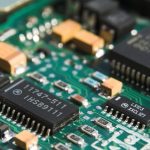Neuralink, Elon Musk’s neurotechnology company, has completed a second human brain implant. Earlier this year, the startup implanted a brain chip into a human patient for the first time. Musk disclosed that the company plans to perform eight more procedures by the end of 2024. Both implants involve the company’s N1 brain-computer interface (BCI), which enables paralyzed individuals to control computer cursors with their thoughts. The technology aims to provide independence to those with neurological damage. Musk shared these updates in a podcast interview with Lex Fridman that aired on Aug. 2.
Previous reports on Neuralink’s endeavors indicated early skepticism about the feasibility and safety of brain implants. Initial trials faced scrutiny over ethical concerns and potential risks. Despite these challenges, the company has continued to advance its technology and has now successfully conducted its second human implant. Earlier criticisms have not deterred Neuralink from pursuing its goal of integrating human brain functions with digital interfaces.
Technological Advancements
Neuralink’s N1 brain-computer interface is a small chip containing over 1,000 electrodes distributed across 64 threads. These electrodes transmit neural signals when embedded in the brain’s motor cortex. The company’s robot surgeon is designed to insert the chip with precision. The first recipient, Noland Arbaugh, a 30-year-old who was paralyzed in a 2016 spinal cord injury, reported significant initial benefits from the implant. However, he experienced reduced functionality when many threads came loose. Subsequent software tweaks restored some capabilities.
Clinical Trials and Future Aspirations
Neuralink aims to perform a total of ten brain implants by the end of the year, with eight more planned by the end of 2024. The second recipient has around 400 electrodes functioning in their brain, and Musk expressed optimism about the results. The company received FDA approval for this second procedure in May, but the exact timing of the surgery remains undisclosed. Musk indicated that future iterations of the N1 would feature increased electrode numbers and enhanced signal processing, potentially allowing users to outperform professional gamers.
Neuralink’s primary goal is to aid paralyzed individuals by addressing fundamental neuron damage in the spinal cord, neck, or brain. Musk also mentioned the possibility of enhancing patients’ communication data rates beyond normal human levels. Long-term, the company aims to improve A.I.-human symbiosis, refining communication bandwidth to keep pace with A.I. advancements. However, before pursuing these ambitious goals, Neuralink needs to mitigate current risks and achieve widespread medical application of its brain chips.
While Neuralink has made significant strides, the journey ahead involves numerous challenges, particularly in terms of safety and ethical considerations. The company’s progress in brain-computer interfaces highlights the potential for such technology to transform lives, especially for those with severe neurological impairments. Still, widespread acceptance will require stringent regulatory oversight and transparent reporting of trial outcomes. As the technology evolves, it could pave the way for broader applications, but for now, the focus remains on medical use and improving the quality of life for patients with severe disabilities.










